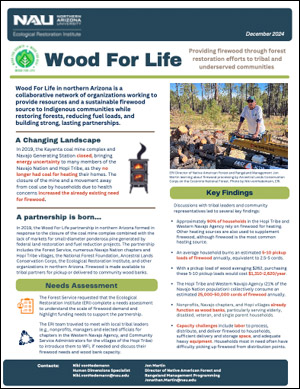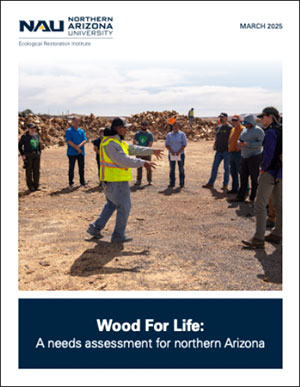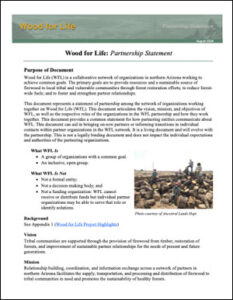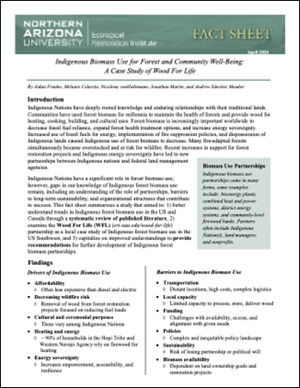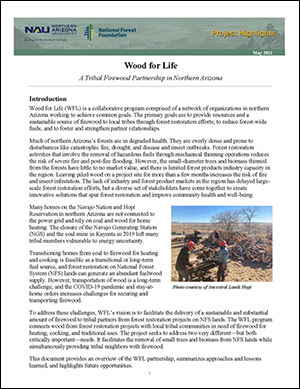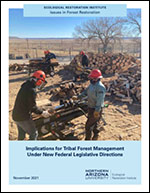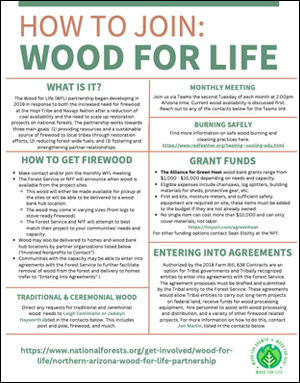ERI Wood for Life Publications
Fact Sheet: WFL Needs Assessment for Northern Arizona
The Ecological Restoration Institute (ERI) developed a needs assessment of the WFL partnership in northern Arizona to support a perceived need to understand the scale of firewood demand and highlight what is needed to support the partnership. This is a 2-page summary highlighting key findings from the needs assessment report.
Report: WFL Needs Assessment for Northern Arizona
The Ecological Restoration Institute (ERI) developed a needs assessment of the WFL partnership in northern Arizona to support a perceived need to understand the scale of firewood demand and highlight what is needed to support the partnership. This is the full report.
Wood for Life: Partnership Statement
Forest biomass is becoming increasingly important worldwide to decrease fossil fuel reliance, expand forest health treatment options, and increase energy sovereignty. The role of Indigenous Nations in this forest biomass use is significant. Innovators at the front of the large-scale Indigenous biomass use movement can help guide future partnerships to learn and improve their models to best serve all involved.
Fact Sheet: Indigenous Biomass Use for Forest and Community Well Being: A Case Study of Wood For Life
Forest biomass is becoming increasingly important worldwide to decrease fossil fuel reliance, expand forest health treatment options, and increase energy sovereignty. The role of Indigenous Nations in this forest biomass use is significant. Innovators at the front of the large-scale Indigenous biomass use movement can help guide future partnerships to learn and improve their models to best serve all involved.
Indigenous Biomass Use for Forest and Community Well Being: A Case Study of Wood For Life
Forest biomass is becoming increasingly important worldwide to decrease fossil fuel reliance, expand forest health treatment options, and increase energy sovereignty. The role of Indigenous Nations in this forest biomass use is significant. Innovators at the front of the large-scale Indigenous biomass use movement can help guide future partnerships to learn and improve their models to best serve all involved.
Project Highlights: Wood For Life
A 7-page summary of Wood For Life’s history, approach, and lessons learned completed in 2021.
Implications for Tribal Forest Management Under New Federal Legislative Directions
In recent decades, catastrophic wildfires and other disturbances like insect or disease outbreaks have increasingly crossed from federally managed lands onto tribal lands, causing damage to and loss of valuable land and resources. These recent events necessitate cross-boundary approaches and shared stewardship to facilitate restoration and resilience.
How to Join Wood for Life
The Wood for Life (WFL) partnership began developing in 2019 in response to both the increased need for firewood at the Hopi Tribe and Navajo Nation after a reduction of coal availability and the need to scale up restoration projects on national forests.

